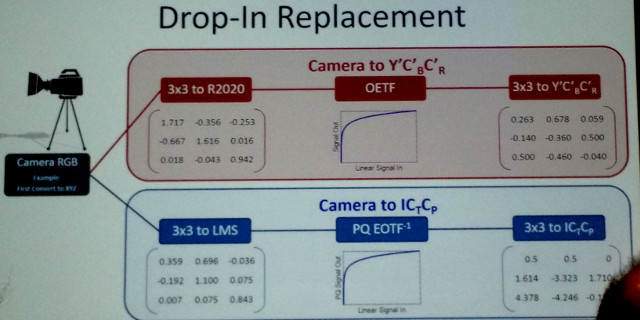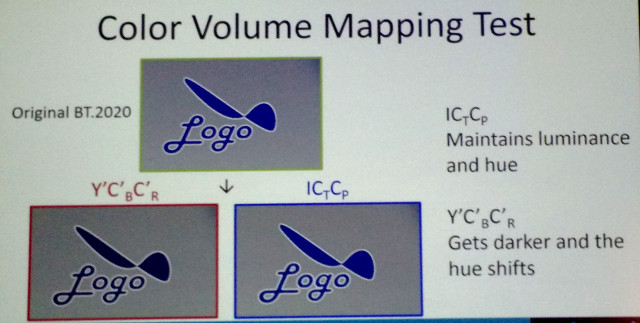One of the more important needs as HDR and WCG content and displays become available is the need to do color remapping. That means taking content from the rec 709 content and expanding it to a wider color gamut and taking content mastered in a DCI-P3 or 2020 color gamut and shrinking it to a smaller color gamut. This is not easy, as many algorithms will shift the colors, altering the intent of the content creator. Now, Dolby has proposed a new method for doing these conversions that it believes will do a better job of preserving the hue or color in the transformations.
We listened to a paper given by Jaclyn Pytlarz of Dolby Labs at NAB, which we believe was very similar to one given at HPA in February. Conversions from HDR to SDR should try to preserve highlight and shadow detail, while color conversion from 2020 to 709 should preserve the color detail. That means retaining the perceived hue, the perceived saturation and the perceived brightness.
Color remapping today is typically done in the YCbCr space, which includes a luma (brightness – Y) component and the color differences in red and blue. But Pytlarz says that remapping from 2020to 709 in YCbCr produces a color shift that is most evident in the blue region.
Pytlarz’s new approach leverages the way the human eye processes color. Our eyes have three different cone types: L, M and S for long (red), medium (green) and short (blue) visible wavelengths. But these get processed into an Intensity channel (luminance) and Tritan axis (red plus green minus blue) and a Protan axis (red minus green).
The gist of her idea is to replace the non-linear gamma correction (OETF) applied to the video signal in the formation of the color difference signals Cb and Cr and instead use the inverse of the PQ curve, which better mimics human vision. That leads to color difference terms she call Ct and Cp. This approach is elegant as it simply requires different 3D matrices in existing processors to create ICtCp signals instead of YCbCr (chart below – similar replacement possible on display side as well).

Her paper then showed some comparison images using these two color spaces to see if the ICtCp met the goals listed above, which they did, of course. One image of a blue car for example, shows a shifting of blue to purple from the left side to the center of the car when transformed using YCbCr. This disappears when transformed using ICtCp.
She also shows charts that revealed a shift in the luminance with changes in chroma for YCbCr conversions, but there was no shift when done in YCtCp.

Pytlarz said that Dolby has offered the approach as an open standard to the ITU-R which will be released soon. She said that this allows companies to go into and out of the color space without any restrictions. When I asked if that meant companies were free to develop their own algorithms to perform color remapping with ICtCp without having to pay any royalties to Dolby, her answer was “I need to check on that”. – CC

